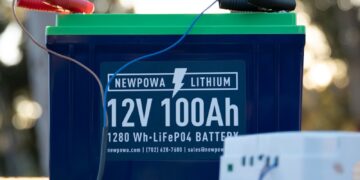In the rapidly evolving mining industry, Fortescue Metals Group (FMG) has distinguished itself as a leader in sustainability and innovation. As mining companies worldwide face increasing pressure to reduce greenhouse gas emissions, Fortescue’s ambitious goal to achieve “Real Zero” Scope 1 and 2 emissions by 2030 has set a new industry standard.
This bold target goes beyond carbon offsets and incremental efficiency improvements — it represents a transformative commitment to decarbonizing mining operations, adopting renewable energy technologies, and integrating sustainable practices at every level.
Fortescue’s Vision: From Iron Ore to Green Iron and Beyond
Under the leadership of Andrew Forrest, Fortescue has aggressively pursued the electrification of mining equipment, development of green hydrogen, and innovation in green iron production. These initiatives exemplify the company’s strategy to reduce its reliance on fossil fuels and accelerate the transition toward renewable energy.
- Electrification of Mining Equipment: Fortescue’s $2.8 billion partnership with Liebherr to build the world’s largest zero-emission mining fleet is a game-changer. By replacing diesel trucks and machinery with electric alternatives, the company is dramatically lowering direct emissions from its mining operations.
- Green Hydrogen and Green Iron: While initial plans to deploy green hydrogen at scale encountered challenges — such as the closure of the Gladstone electrolyser plant — Fortescue pivoted to producing green iron by upgrading low-grade ore using clean energy. This pivot highlights the complex realities of scaling renewable hydrogen but underscores Fortescue’s ongoing commitment to innovation. Fortescue’s green hydrogen journey
- Global Renewable Energy Projects: Beyond Australia, Fortescue is investing in international renewable projects like the green hydrogen initiative in Brazil’s Ceará region, positioning the company as a global leader in clean energy integration. Fortescue’s global renewable investments
The Energy Challenge in US Mining Operations
As Fortescue expands its presence in the United States, its mining operations face a common challenge: how to meet enormous energy demands while reducing carbon emissions. Mining is an energy-intensive industry requiring continuous, reliable power to support excavation, processing, and transportation.
Many US mining facilities operate in remote or off-grid locations, where traditional power supply options are limited, expensive, or heavily reliant on fossil fuels. This makes renewable energy integration not just an environmental imperative but a financial and operational opportunity.
Renewable Energy Solutions for Mining: Solar, Wind, and Battery Storage
Renewable energy technologies like solar power, wind turbines, and battery energy storage systems (BESS) have matured significantly, offering mining companies viable alternatives to diesel generators and grid electricity with high carbon footprints.
- Solar Microgrids: Solar arrays combined with energy storage can provide reliable, clean electricity to mining sites. Microgrids enhance energy resilience by enabling local generation and storage, reducing dependence on centralized grids vulnerable to outages or transmission issues. Microgrid Knowledge on mining microgrids
- Battery Energy Storage Systems (BESS): Batteries store excess energy generated from solar or wind during peak production times, making power available 24/7. For mining operations, BESS can stabilize power supply, smooth out fluctuations, and support peak shaving to lower energy costs. BESS explained by the U.S. DOE
- Wind Power: Depending on geographic location, onsite or nearby wind farms can complement solar installations by generating power during non-daylight hours or seasonal shifts. Wind energy diversification can help mines achieve a more balanced renewable energy portfolio. Wind power benefits for mining
By deploying these technologies in tandem, mining operations can not only reduce emissions but also achieve long-term energy cost savings, increased reliability, and greater control over their energy use.
Energy-as-a-Service (EaaS): A New Model to Enable Clean Energy in Mining
One of the biggest hurdles for mining companies to transition to renewable energy is the upfront capital expenditure and the operational expertise required to build, own, and maintain energy infrastructure.
Energy-as-a-Service (EaaS) models offer a compelling solution by providing mining companies with turnkey renewable energy systems without large initial investments. Under EaaS agreements, third-party energy providers:
- Finance, build, and operate solar, wind, and battery systems
- Deliver reliable energy through long-term contracts
- Manage maintenance and performance optimization
This arrangement allows mining companies to benefit from clean energy’s cost savings and emission reductions while focusing capital and resources on core mining activities. How EaaS works
The Role of Land Acquisition Near Mining Sites for Renewable Development
A unique and strategic approach in the renewable mining energy transition is the acquisition or leasing of land adjacent to mining operations for renewable energy development. This method offers several advantages:
- Close proximity to energy load centers reduces transmission losses and costs
- Enables development of larger-scale solar farms or wind projects than may be feasible onsite
- Provides additional revenue streams for landowners and creates local economic opportunities
Companies specializing in renewable energy project development, including solar and wind, often partner with mining operators to secure land rights, design customized energy solutions, and integrate those systems seamlessly into mining operations.
Industry-wide Momentum: Fortescue’s Competitors and Broader Trends
Fortescue is part of a growing cohort of mining companies embracing sustainability:
- BHP: Actively investing in renewables and committing to reducing emissions across global operations, BHP has established partnerships to power its mines with solar and wind energy, including projects in the US and Australia.
BHP Climate Action - Rio Tinto: Advancing sustainability through innovative technologies, Rio Tinto pursues low-carbon metal production and has made strides in powering mines with renewables and battery storage.
Rio Tinto Climate Change Strategy
These companies reflect a broader industry transformation, propelled by regulatory pressures, stakeholder expectations, and economic incentives.
Pacifico Energy: Enabling Mining’s Renewable Future
In the evolving landscape of mining energy, companies like Pacifico Energy have emerged as key enablers of sustainable transitions. Pacifico Energy specializes in providing comprehensive renewable energy solutions tailored to heavy industry, including mining.
Through Energy-as-a-Service offerings, Pacifico Energy finances, builds, owns, and operates solar, wind, and battery systems, reducing the operational burden on mining companies. Additionally, their strategic focus on acquiring and developing land adjacent to mining sites creates opportunities for offsite renewable energy projects that deliver reliable, clean power.
Such partnerships offer mining companies scalable, cost-effective paths toward decarbonization, operational resilience, and alignment with ESG goals.
Looking Ahead: The Future of Sustainable Mining
As demand for critical minerals grows in support of the global clean energy transition, the mining industry’s environmental footprint will remain under scrutiny. Companies that lead in integrating renewable energy and sustainable practices will not only meet regulatory and investor demands but also unlock long-term operational advantages.
Fortescue Metals Group exemplifies this leadership through its ambitious emissions targets and pioneering clean energy initiatives. With the support of innovative renewable energy developers and flexible Energy-as-a-Service models, mining operations across the US and worldwide have an increasingly clear path toward a cleaner, more sustainable future.



















